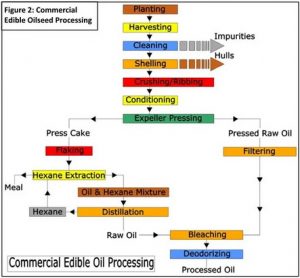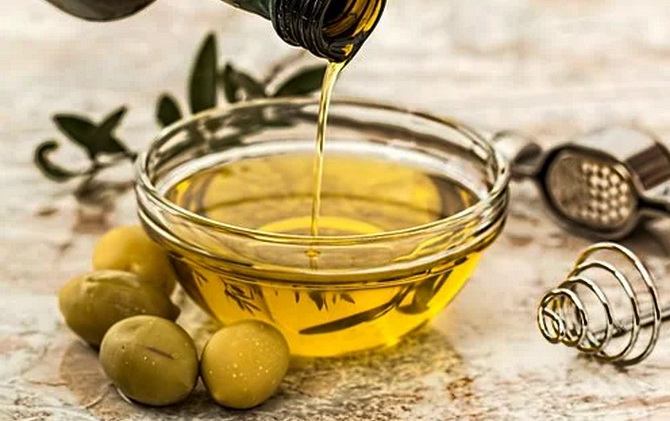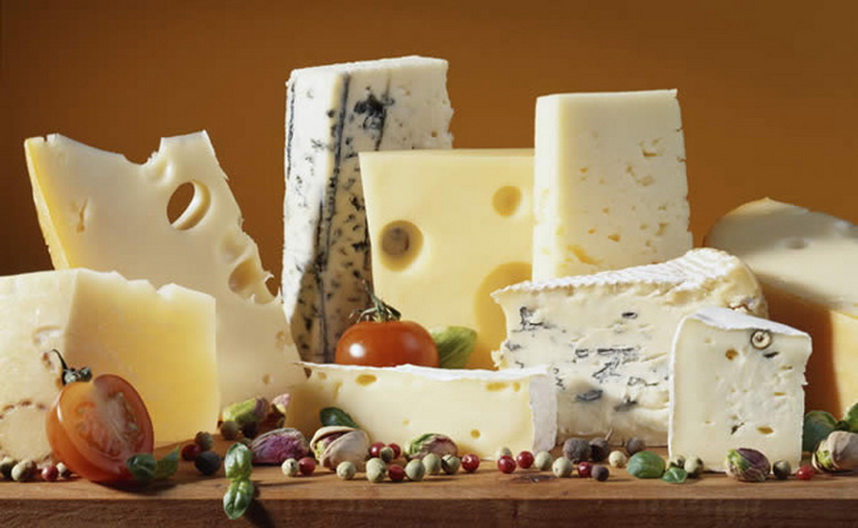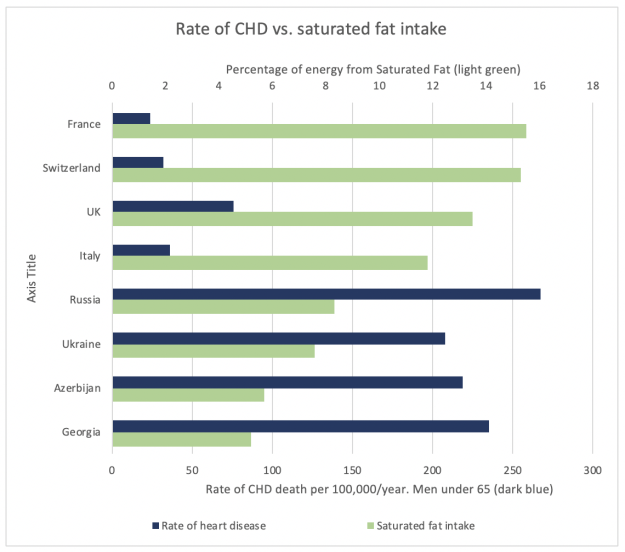I cook a lot, and I aim for tasty, healthy comfort food that demands no acrobatics. Or ingredients you’ve never heard of, such as lark’s tongues or nightingale fetlocks. I often check recipes online for fresh ideas, and I’m flabbergasted that just about all our high-profile chefs tell us to fry food in ‘vegetable oil.’
First problem: There is no such thing as vegetable oil. You can’t make oil from potatoes, carrots or beans, only Schnaps. Second problem: Most ‘vegetable oils’ are toxic. They’re produced by industrial processes that use solvents, heat, high pressure, stabilizers, bleaches and deodorisers. After you’ve watched this video, the $100 billion ingredient that shows how these oils are made, you won’t ever buy them again.
So why do professional chefs not give a toss? They tell us that any decent meal starts with top quality ingredients, don’t they? And they tell us to fry those top quality ingredients in crap oils? It’s like Michelangelo using no name paint for the Sistine Chapel.
This is Australia 2022, and we make some of the world’s best, nutritious oils, from olives, macadamias and avocadoes. I buy Australian cold-pressed extra virgin olive oil from Woolworths or Coles for $6 a half litre. Can Adam Liaw really not afford to cook with a decent oil? I’ve even seen Canola oil suggested by chefs in their recipes. Guillome Brahimi is the exception – he uses butter for frying.
The short story
I suspect it’s because most of our best chefs learnt their craft in commercial kitchens. If you check the backdoors of most restaurants, even good ones, you see 4 gallon drums of cottonseed oil piled up. Why? Because it’s dirt cheap. It’s actually a seed oil but it’s been lumped in with the vegetable oils, and it’s often blended with other vegetable oils. Proctor & Gamble’s Crisco was the original cottonseed oil.
Cottonseed oil has nothing to recommend it other than its low price. Many packaged foods in our supermarkets contain cottonseed oil or blends that contain it and transfats for stabilty: frozen chips and pizzas, frozen meals, biscuits, cakes, donuts – virtually anything that’s been fried or baked. It contains toxins that are stripped out during processing, and it often contains pesticide residues since cotton is not classified as a food crop, so farmers are free to use as many agrichemicals as they like.
The Good Oils
It won’t come as a surprise that ‘vegetable oils’ aren’t good for us either, since they can turn toxic when used for frying. Polyunsaturated vegetable oils become unstable when exposed to heat, and oxidize easily. The most stable oils / fats are saturated and monounsaturated. A much simpler way to tell good from bad oils is to stick to oils that are ‘natural’, i.e. those made using minimal processing.
My favourite for cooking is Extra Virgin Cold-Pressed Olive Oil. I also use some of the others below, most of all butter, macadamia oil, avocado oil and duck fat. The numbers indicate the ‘smoke points’ of the oils, this is the point where they become unstable and oxidize.
-
- Avocado Oil – 270°C
- Extra Virgin Cold-Pressed Olive Oil – 200°C
- Sesame oil – 230°C
- Macadamia Oil – 230°C
- Butter – 150°C
- Duck fat – 200°C
- Coconut oil – 230°C
- Walnut Oil – 160°C
- Flaxseed Oil – 107°C
Please note:
Boutique olive oils can have strong flavours, which you may not want in your cooking. Sesame oil also has a distinctive flavour, which plays a role in the overall flavour of Asian foods. Walnut oil and flaxseed oil are delicate Omega-3-rich oils best used in salad dressings. They should be refrigerated once open.
The Bad Oils
This list from the US Heart Foundation covers ‘common cooking oils that contain more of the “better-for-you” fats and less saturated fat.’
- Canola
- Corn
- Olive
- Peanut
- Safflower
- Soybean
- Sunflower
‘Blends or combinations of these oils,’ they add, ‘are often sold under the name “vegetable oil,” and cooking sprays made from these oils are also good choices.’ Good choices? These seed oils masquerading as vegetable oils are called RBD oils in the trade – Refined, Bleached and Deodorised.
 How did these experts end up with a shortlist of the most processed, most unstable, lowest quality oils on earth? With the exception of olive oil.
How did these experts end up with a shortlist of the most processed, most unstable, lowest quality oils on earth? With the exception of olive oil.
Because they only looked at one thing, and picked the oils with the least saturated fat / most polyunsaturated fat content. Forget about lack of processing and nutritional value, forget about the anti-inflammatory properties of our best cooking oils. That’s how facile these folks are, and they haven’t caught up with the last 30 years of research. And these people give Americans health advice? No wonder they’re such a sick lot.
Image Source: Penn State University
Oils and Heart Health
It’s incomprehensible that in 2020, with all the recent research upending the old wives tales about killer cholesterol and artery-clogging saturated fat, we find the American Heart Association clinging to that old story. Its most recent encyclical confirmed that the earth was flat and the sun rotated around it: it advised people to replace saturated fats with unsaturated fats, which include polyunsaturated fats and monounsaturated fats,
It urged Americans to reduce their intake of fats that come from meats, poultry, cheese, dairy products and tropical oils, such as coconut and palm oils, to reduce their risk of heart disease. They were advised to raise the level of ‘healthy fats’ in their diets by replacing animal fats with vegetable fats, and added that polyunsaturated fats were better for the heart than monounsaturated fats. Out go olives and avocadoes …
If they could just get their heads out of the molecular morass of research and have a look at the real world, they’d come across some confronting evidence that their recommendations couldn’t be more wrong.
How Many Paradoxes will it Take?
About 3 decades ago, we heard about the ‘French Paradox.’ In a nutshell, the French use more butter than any other country on earth, eat their way through mountains of triple cream brie and pâté de foie gras, and love duck cooked in its own fat. They drink more and smoke more than we do as well, and they have the lowest rate of heart disease in Europe and the second-lowest rate in the world. The French also live 4 years longer than Americans.
Image Source: France Directory
The health experts in English-speaking countries called it a paradox because they can’t explain it. Open-minded scientists would’ve looked for other exceptions to their rules, to check if they should reexamine their assumptions, and they’d have found a number of them:
- France – life expectancy 83, obesity 15%, deaths from heart disease rank 182
- Switzerland – obesity 10%, life expectancy 84, deaths from heart disease rank 171
- Spain – life expectancy 83, obesity 23%, deaths from heart disease rank 177
- Belgium –life expectancy 82, obesity: 16%, deaths from heart disease rank 172
- Italy – life expectancy 83; obesity 15%; deaths from heart disease rank 166
By comparison,
- USA – life expectancy 78, obesity 37%, heart disease rank 80
- Australia – life expectancy 83, obesity 30%, deaths from heart disease rank 175
please note: higher numbers mean lower levels of heart disease
Complete list from the WHO
The Take-Home Message
Like France, the other four countries on the list above enjoy a rich diet high in saturated fats. By contrast, Russia and its former satellites the Ukraine, Tajikistan, Azerbaijan, Moldova and Georgia consume far less saturated fat than most European countries. Their life expectancy is around 72 years, obesity affects 20%, and their deaths from heart disease ranking is 23 – we’re talking about 225 deaths from Heart Disease in 100,000 citizens per annum, compared with 31 in France, or 51 in Italy.
Clearly these countries demonstrate that there’s more to heart disease than high cholesterol and saturated fat: smoking is still very popular and drinking vodka even more so. The main reason why rates of heart disease have been dropping in western countries is the number of people who stopped smoking.
Image Source: Dr Malcolm Kendrick
Additional Reading
Long Term skeptic of the cholesterol / fat story Malcolm Kendrick gives us a short take on a study of 36,000 people over twelve years, conducted in the Netherlands. The main conclusions were that that: ‘Total saturated fat intake was associated with a lower IHD (Ischaemic Heart Disease) risk (HR per 5% of energy 0.83). Substituting SFAs with animal protein, cis-monounsaturated fats, polyunsaturated fats or carbohydrates was significantly associated with higher IHD risks (HR 1.27 – 1.37).’1
In other words, eating less saturated fat increased the rates of heart disease. Says Dr Kendrick: ‘One thing scientific researchers have learned over the years is that you can never say anything in a straightforward way. I think the game is that, if anyone can easily understand your findings, you lose.’
A couple more studies:
Food consumption and the actual statistics of cardiovascular diseases: an epidemiological comparison of 42 European countries – Grasgrube, Sebera, Hrazdira, Hrebickova and Cacek https://www.ncbi.nlm.nih.gov/pmc/articles/PMC5040825/
‘Our results do not support the association between CVDs and saturated fat, which is still contained in official dietary guidelines. Instead, they agree with data accumulated from recent studies that link CVD risk with the high glycaemic index/load of carbohydrate-based diets. In the absence of any scientific evidence connecting saturated fat with CVDs, these findings show that current dietary recommendations regarding CVDs should be seriously reconsidered.’
Saturated fat does not clog the arteries: coronary heart disease is a chronic inflammatory condition, the risk of which can be effectively reduced from healthy lifestyle interventions. (British Medical Journal)




